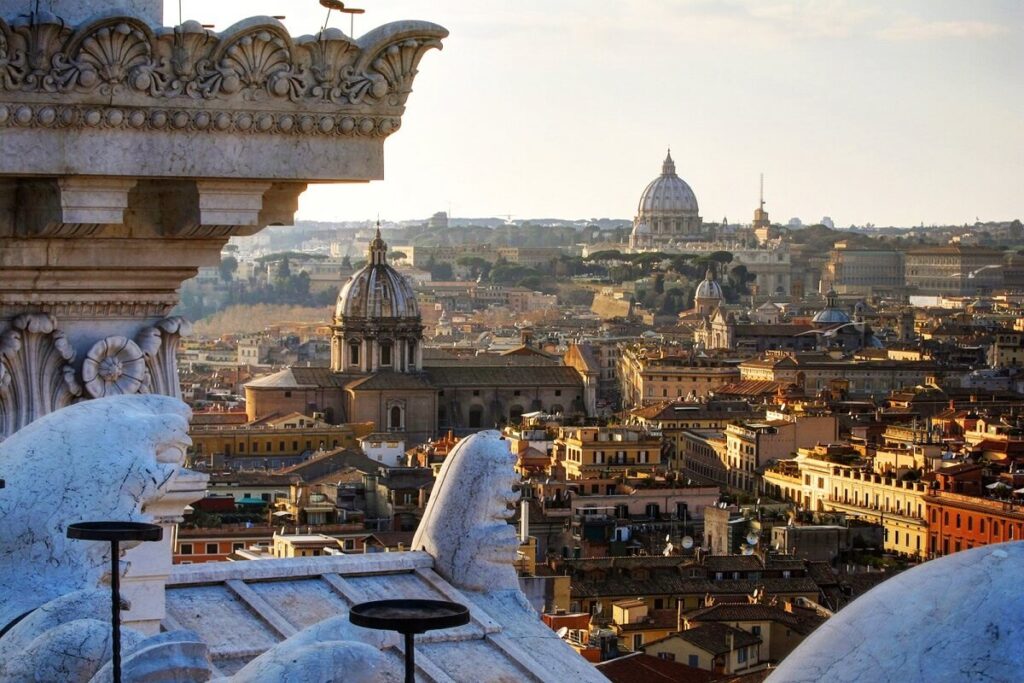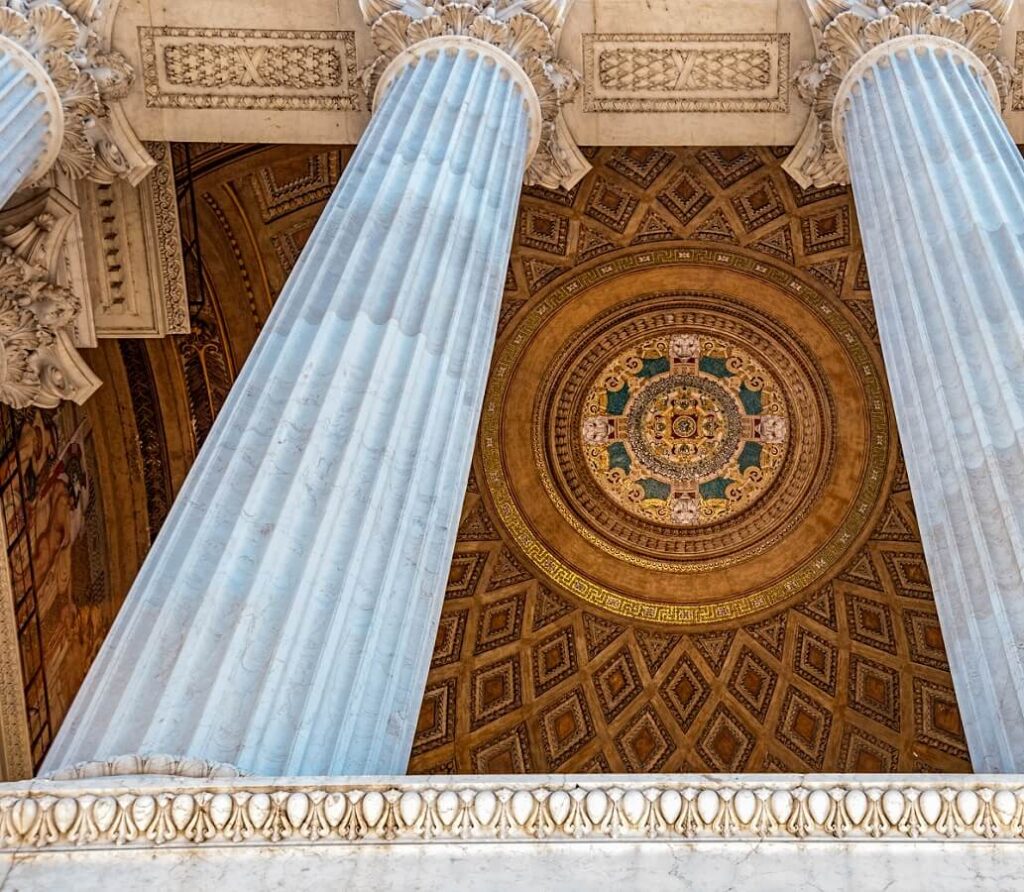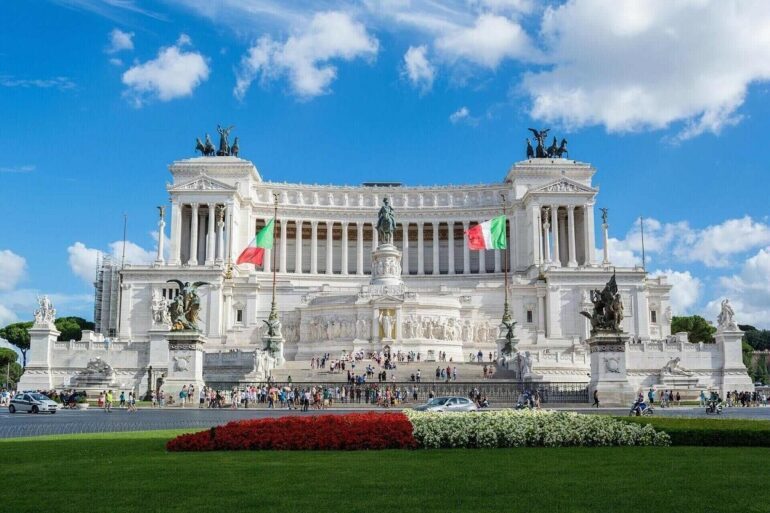Learn about the Altare della Patria, one of the biggest monuments in Rome and what it has to offer
The Altar of the Fatherland (also called Il Vittoriano) is definitely a sight to see, and with it being 266 feet tall, it’s also one you can’t miss. The white-marble monument was designed by Giuseppe Sacconi and decorated by Angelo Zanelli and was completed in 1935.
The Altar of the Fatherland is located in the Piazza Venezia, a central hub in Rome. The piazza is at the intersection of Via dei Fori Imperiali and Via del Corso. The portico monument features tall columns, a propylaeum, and fountains. The two fountains represent the two seas that border Italy: the Adriatic Sea and the Tyrrhenian Sea.
Inside The Altar of the Fatherland is 243 steps, making it the perfect place to get all of your daily steps in. But, don’t forget to spend some time looking out at the breathtaking view of Rome once you reach the top.
The Terrazzo Italia is the first terrace where you can see a 360-degree panoramic view of the city. If you want to go even higher, you will need to ride the Roma dal Cielo elevator to get to the Quadrigae Terrace, which costs €7. The views include sights of the Colosseum, Roman Forum, Trevi Fountain, and more!

The monument serves as a symbol of unity in Italy, specifically of the Italian army and the legacy of the first king, Victor Emmanuel II. There are sculptures of the king, the goddess Victoria riding on quadrigas, and of noble cities.
The statues of the noble cities are placed below the statue of Victor Emmanuel II to signify the foundation and unity of the Italian cities.
Inside the monument is a memorable sight. The fresco art is mesmerizing with its intricate details, vivid colors, and unique design. It is also home to the History of the Italian Risorgimento and the Central Museum of the Risorgimento, which features weapons, flags and more and is perfect for those who want to learn more about the Unification of Italy.
But wait, there’s more!
On one side of the Altar is a tomb made for an unknown Italian soldier (milite ignoto) who died in the First World War who was never identified due to the extent of his injuries. This unknown soldier represents all soldiers who lost their lives during war and has become a symbol of the Fatherland.

The Altar of the Fatherland is not loved by all. This is because the monument is built with Brescian stone from Northern Italy. The monument isn’t built with local stones which gives it less Roman cultural significance and local representation.
Also, the creation of this altar resulted in the demolition of other archaic buildings and homes. This caused many Romans to relocate since their homes were being used for the Altar. The monument may be an eyesore for some Romans as well. The monument is very large, more so than all of the other buildings around it. It is a stark contrast to the other buildings around it and is bigger than other surrounding monuments which not everyone is ecstatic about.
You might love the Altar, or you might hate it, but you can’t deny that the design, architecture, and meaning is one of a kind.
Piazza di San Marco
HOURS: Everyday from 9:30am to 7:30pm. Last admission is at 6:45pm.






